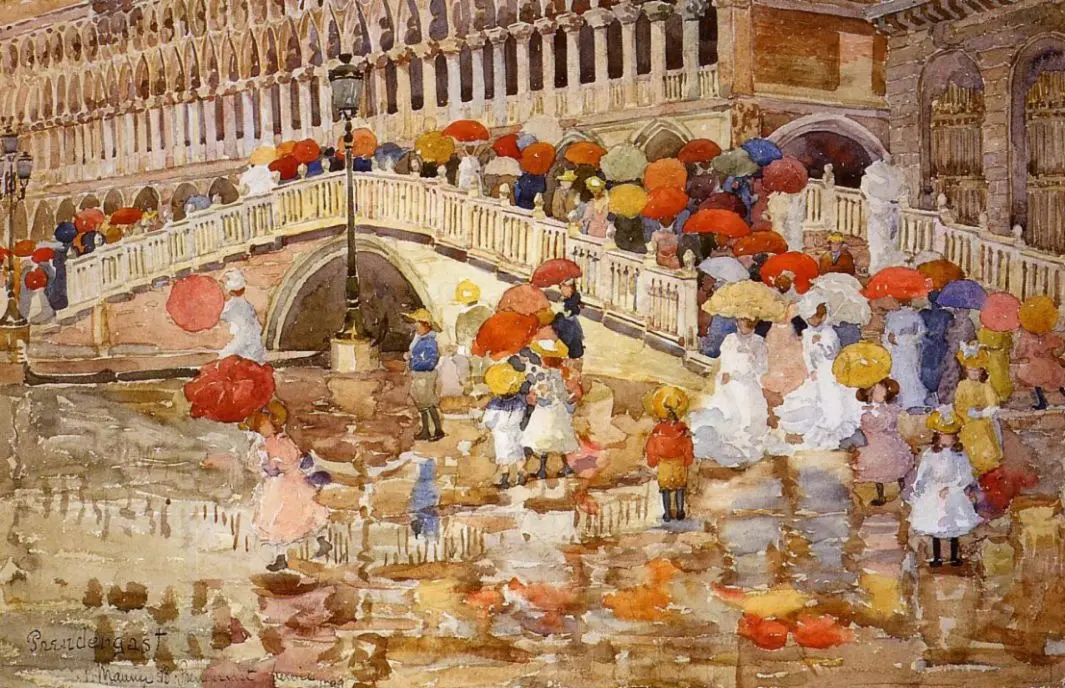It has often been said of Maurice Brazil Prendergast (1859-1924) that he represented for art across the Atlantic a form of transition between Impressionism and Post-Impressionism. A sort of Cézanne or Gauguin...
For this American of Franco-Irish origin, the abundance of references, from Degas to Cézanne and from Seurat to Lautrec, fueled an original plastic freedom that would take him from the acidulous lightness of his first watercolors to the more austere and most abstract canvases of his end of career.

A great traveller, Maurice Prendergast, who began his career in Boston, went to study in Paris at the Julian and Colarossi academies between 1891 and 1894. During these years, he rubbed shoulders with Walter Sieckert and Sommerset Maugham in particular. He will make several trips to Europe where he will draw elements of his originality from the decorative patterns of color that he finds in the work of the Fauves and the Nabis.
He belonged to the famous "Group of Eight" (8 American painters), which also included Robert Henri, leader of the group, Everett Shinn, John Sloan, Arthur B. Davies, Ernest Lawson, George Luks and William J. Glackens, later joined by George Bellows. Reacting against an American academic and aesthetic tradition subjugated to European aesthetics, the members of The Eight founded their own artistic society in the bustling neighborhoods of New York and set out to create original American painting.

The Japanese influence in Prendergast's work is clear, like this view of Venice that one cannot help but compare to the prints of Utagawa Toyokuni. Same crowd, same bridge, same movement, three quarters back for Prendergast, lateral from right to left for the Japanese.

And for good measure, the Ponte della Paglia, one of Prendergast's earliest and most delicious large canvases, which he extensively repainted several years after its original execution and shows the contrast between his early and late styles. Towards the end of his life, he reworked figures and surroundings that were initially extremely detailed, with broad brush strokes and heavier outlines, vibrating a uniform and austere light through the splashes of color in robes and parasols. .


Duncan Phillips wrote of Maurice Prendergast: “…he laid round dabs of color, one on top of the other, letting the undertones show through. Thus he made his tones and his tapestry sparkle, not a flat textile, but a world of incandescent space….
In his art history lectures, Fabrice Roy combines the past with the present, in a poetic and playful evocation of the French 19th century...


